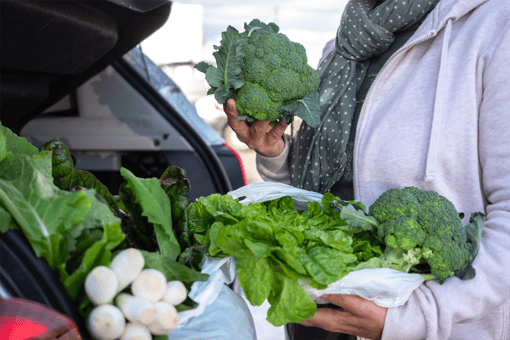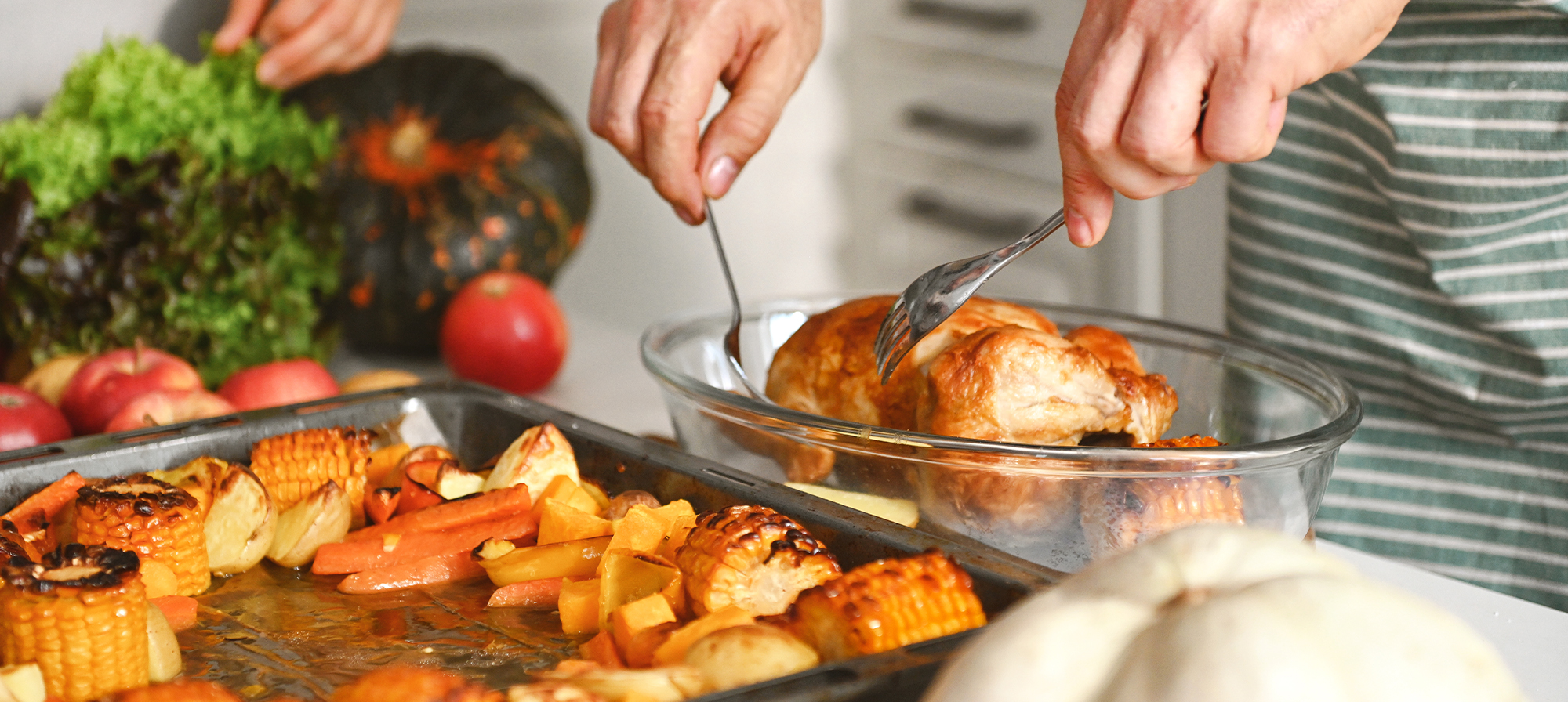There are many types of anemia. The most common, iron-deficiency anemia, may be easier to prevent and/or treat than other types. Read on to learn why.
As the name suggests, iron-deficiency anemia is caused by low levels of iron in the blood. Iron is a mineral that plays a vital role in both your workouts and your overall health. Your body needs iron to make hemoglobin. This protein helps your red blood cells carry oxygen from your lungs to all the cells in your body, including your muscle cells. Your muscle cells use this oxygen to convert glucose (from the foods you eat) into energy.
Iron-deficiency anemia is a condition that disrupts this key process. A lack of iron means a lack of hemoglobin. That means your red blood cells aren’t bringing enough oxygen to your muscles and other tissues. And that, in turn, means less energy. Your muscles tire much faster during workouts. Plus, the rest of your body lacks the energy to function, even when doing simple daily tasks.

Signs you may have iron-deficiency anemia
With mild cases of anemia, symptoms may be subtle. But if you have a serious case, the symptoms are more obvious. You may feel tired, run-down, and weak. You may feel cold, dizzy, or lightheaded. Your heart may beat more rapidly, and you may feel short of breath. You may also have headaches or chest pain.
Iron-deficiency anemia may affect older adults differently
Studies have found that anemia, including iron-deficiency anemia, is common in adults 65 and older . And symptoms of anemia may be more severe when you’re older. For example, the weakness caused by anemia may make balance and walking harder. This can raise the risk of falls. Confusion and depression are also more common in older adults with anemia. Left untreated, anemia may lead to a shorter lifespan in older adults, as well.

Common causes of iron-deficiency anemia in older adults
Some causes of anemia are out of your hands. Others, you may be able to influence. Some of the common causes for older adults include:
- Diet: Not eating enough iron-rich foods—such as meat, eggs, and leafy green veggies—may cause low blood iron levels. Some people who eat a strict vegan or vegetarian diet may not be eating enough foods that are high in iron.
- Intestinal issues: You absorb iron through your small intestine. Disorders like celiac disease can keep your body from absorbing enough iron. If you’ve had surgery to bypass or remove part of your small intestine, this may also affect how well you absorb iron.
- Blood loss: Your blood contains iron, so losing blood means less iron. Health issues, such as ulcers, hernias, and some cancers, can cause blood loss. The use of certain over-the-counter pain relievers can also cause gastrointestinal bleeding. Aspirin and prescription blood thinners may also raise the risk of bleeding. And if you’re a blood donor, you lose blood with each donation.

Talk with your doctor if you suspect iron-deficiency anemia
If you think you may be low in iron, talk with your doctor. They can run tests for anemia and help find and treat the underlying cause. They may suggest you add more iron-rich foods to your food plan. They may also suggest you take iron supplements at a certain dose and for a specific length of time. Don’t take iron supplements unless your doctor finds your iron levels are low and recommends them.
Bottom line: Don’t ignore low iron or iron-deficiency anemia. Left untreated, it can lead to more serious complications, including death. Discover why adults with a certain bleeding disorder are at higher risk of blood clots if their iron levels get too low .

Lowering the risks for iron-deficiency anemia
You can’t control some of the risk factors for low iron, such as having certain health conditions. Other factors, you might not want to change, such as following a vegan or vegetarian food plan or donating blood. But even the risk factors you’d rather not change can be mitigated with help from your doctor.
How iron-rich foods can help
One step you can take: Eat a range of iron-rich foods and enough of them to get the amount of iron you need. The recommended daily allowance of iron for men and women over the age of 51 is 8 mg. Here are some choices that are high in iron:
- Red meat, pork, and poultry
- Seafood (specifically oysters, clams, tuna, and haddock)
- Eggs
- Lentils, beans, peas, tofu, and tempeh
- Dark, leafy greens (spinach, kale, collard, and dandelion)
- Broccoli and asparagus
- Dried fruits (apricots, raisins, prunes, and prune juice)
- Nuts and seeds (pistachios, cashews, almonds, and pumpkin seeds)
- Quinoa
- Foods fortified with iron (cereals, breads, and pastas)
Eat plenty of foods high in vitamin C, too, as that helps your body better absorb iron. Tomatoes, strawberries, red bell peppers, citrus fruits, and broccoli are good sources of vitamin C. For the best results, pair iron-rich foods with foods that are high in vitamin C. For instance, add a squeeze of lemon juice to sautéed spinach. Or add sliced strawberries to a bowl of iron-fortified breakfast cereal.
Don’t let a lack of iron harm your health or hamper your workout routine. If you suspect you’re too low in iron, talk with your doctor right away.
Not a Silver&Fit® member? Learn more about everything the program has to offer, including more helpful healthy living tips like this, here on our website.
This information is not intended to take the place of regular medical care or advice. Please check with your doctor before using this information or beginning any self-care program. Images used for this article do not depict any members of the Silver&Fit program.
References
American Society of Hematology. (n.d.). Anemia. https://www.hematology.org/education/patients/anemia
Benjamin, H. J. (2019, August 27). Iron strength: What endurance athletes should know about iron deficiency anemia and ferritin screening. USA Triathlon. https://www.usatriathlon.org/articles/training-tips/what-endurance-athletes-should-know-about-iron-deficiency-anemia-and-ferritin-screening
Cleveland Clinic. (2024, April 16). Anemia. https://my.clevelandclinic.org/health/diseases/3929-anemia
Cleveland Clinic. (2023, March 15). 52 foods high in iron. https://health.clevelandclinic.org/how-to-add-more-iron-to-your-diet/
Gaskell, H., Derry, S., Andrew Moore, R., & McQuay, H. J. (2008). Prevalence of anaemia in older persons: Systematic review. BMC Geriatrics, 8, 1. https://doi.org/10.1186/1471-2318-8-1
Johns Hopkins Medicine. (n.d.). Iron-deficiency anemia. https://www.hopkinsmedicine.org/health/conditions-and-diseases/irondeficiency-anemia
Kadambi, S. (2019, January). Anemia in older adults: Not simply a consequence of aging. University of Rochester Medical Center. https://www.urmc.rochester.edu/MediaLibraries/URMCMedia/medicine/geriatrics/images/Ger-E-News-Jan-2019-Anemia-in-Older-Adults.pdf
Livesey, J. A., Manning, R. A., Meek, J. H., Jackson, J. E., Kulinskaya, E., Laffan, M. A., & Shovlin, C. L. (2012). Low serum iron levels are associated with elevated plasma levels of coagulation factor VIII and pulmonary emboli/deep venous thromboses in replicate cohorts of patients with hereditary haemorrhagic telangiectasia. Thorax, 67(4), 328-333. https://doi.org/10.1136/thoraxjnl-2011-201076
Mayo Clinic. (2022, January 4). Iron deficiency anemia. https://www.mayoclinic.org/diseases-conditions/iron-deficiency-anemia/symptoms-causes/syc-20355034
MedlinePlus. (2023, April 18). Iron deficiency anemia. U.S. Department of Health and Human Services, National Institutes of Health, National Library of Medicine. https://medlineplus.gov/ency/article/000584.htm
National Heart, Lung, and Blood Institute. (2022, March 24). Iron-deficiency anemia. U.S. Department of Health and Human Services, National Institutes of Health. https://www.nhlbi.nih.gov/health/anemia/iron-deficiency-anemia
National Institutes of Health Office of Dietary Supplements. (2023, August 17). Iron. U.S. Department of Health and Human Services. https://ods.od.nih.gov/factsheets/Iron-Consumer/
United States Department of Agriculture. (2019, April 1). Quinoa, cooked. FoodData Central. https://fdc.nal.usda.gov/fdc-app.html#/food-details/168917/nutrients
Walther, J. (n.d.) Iron: An essential mineral for athletic performance. National Academy of Sports Medicine. https://blog.nasm.org/nutrition/iron-an-essential-mineral-for-athletic-performance
This article was written by Gail Olson, edited by Nora Byrne, and clinically reviewed by Elizabeth Thompson, MPH, RDN, on May 2, 2025.





